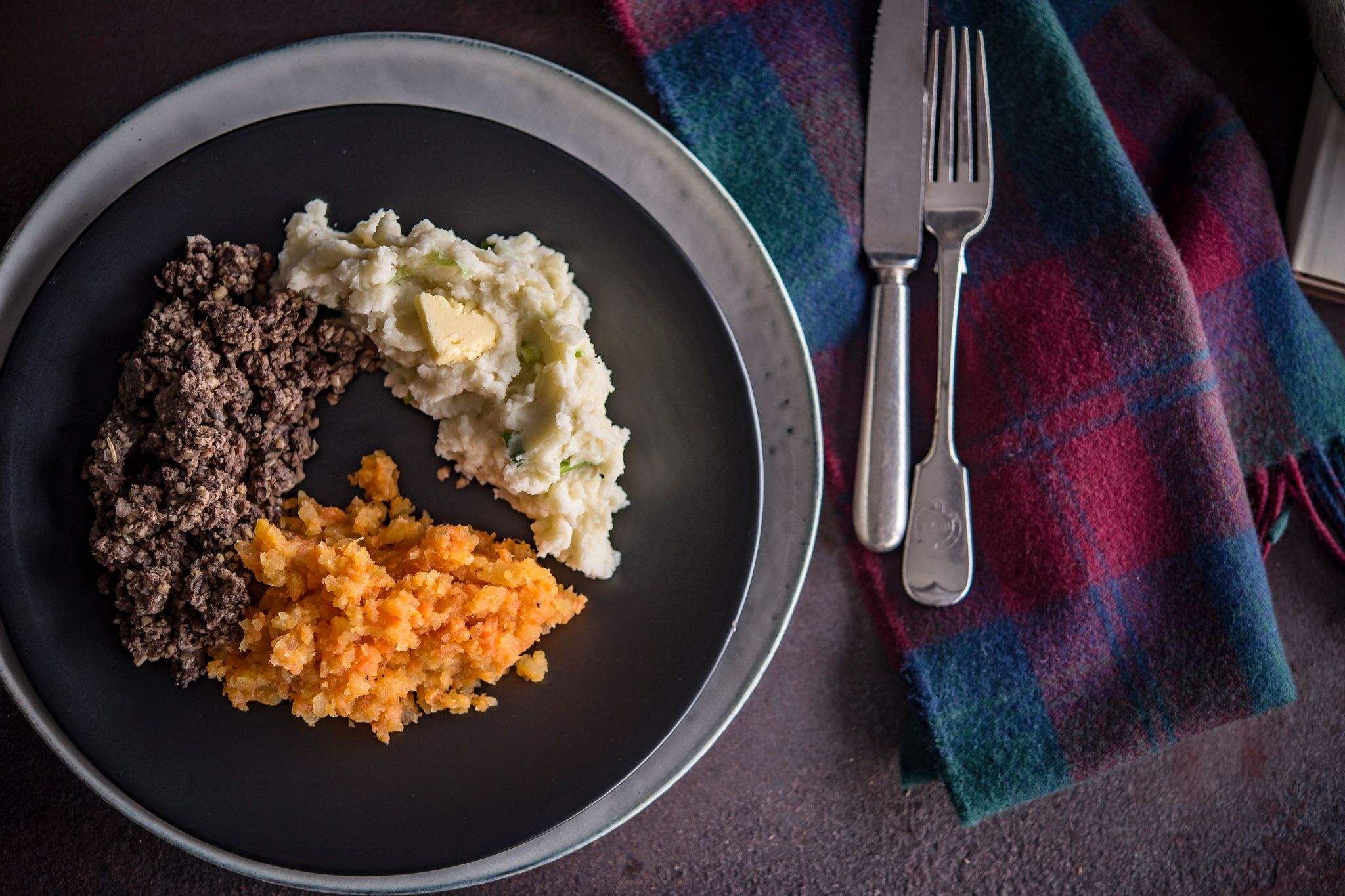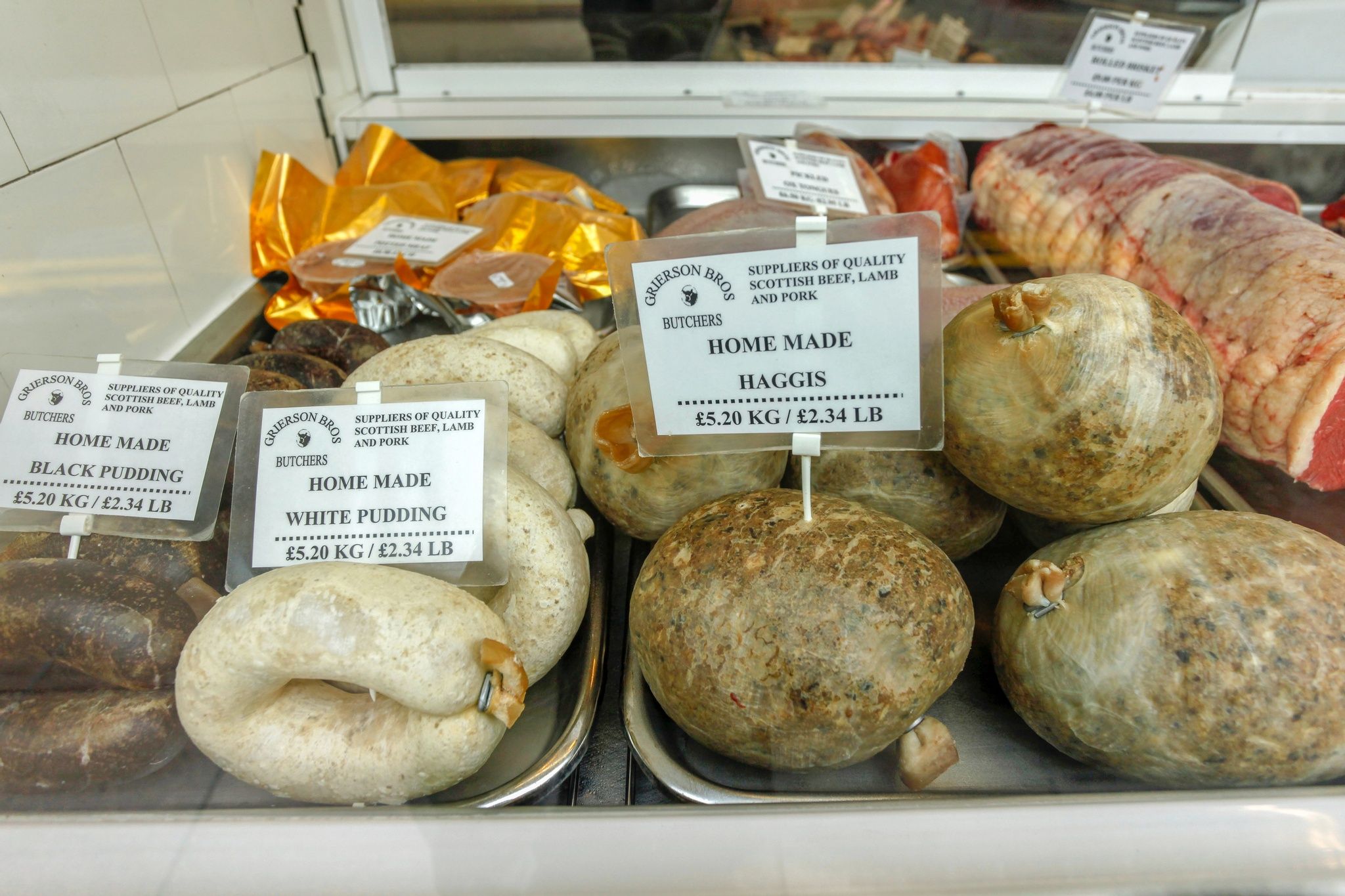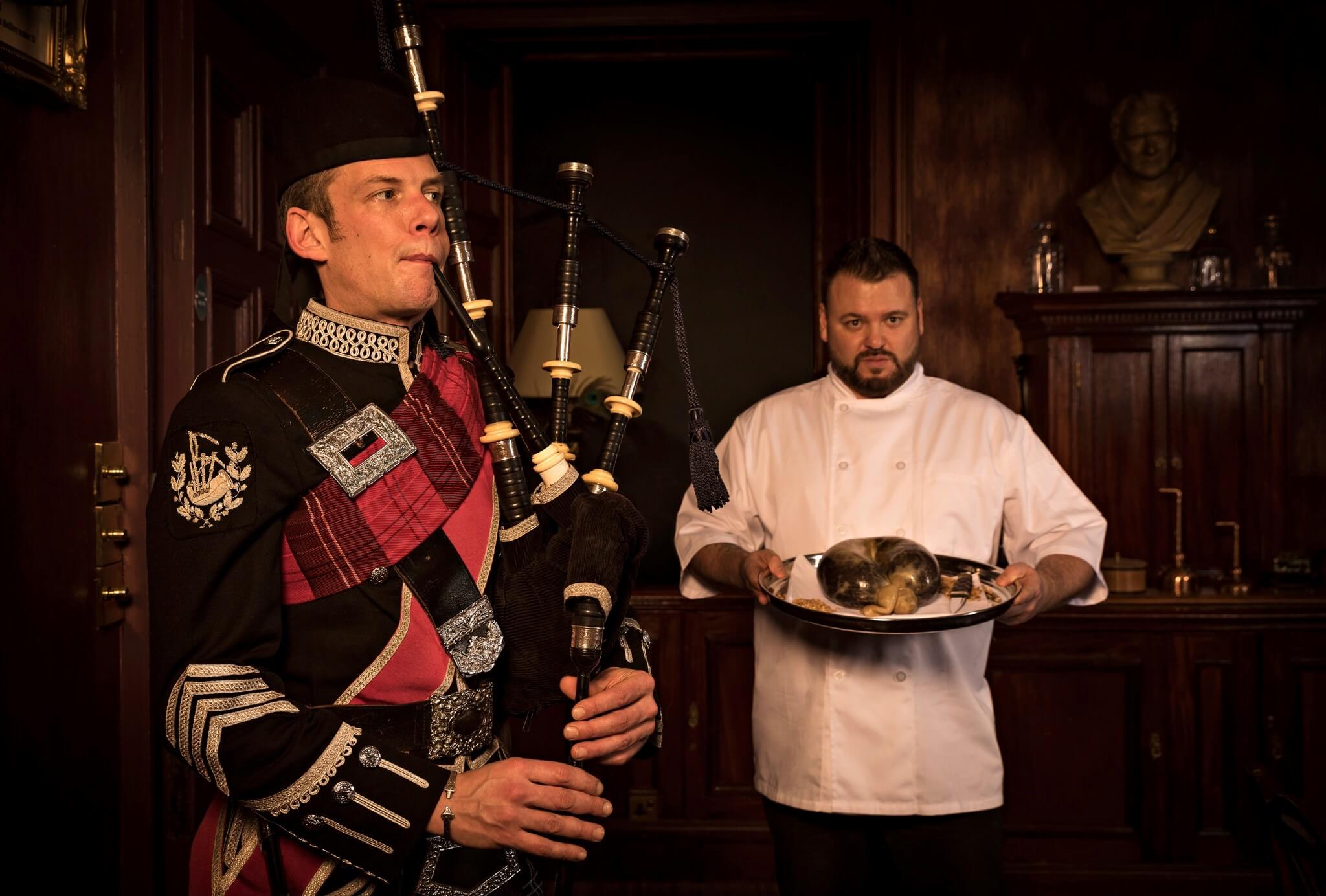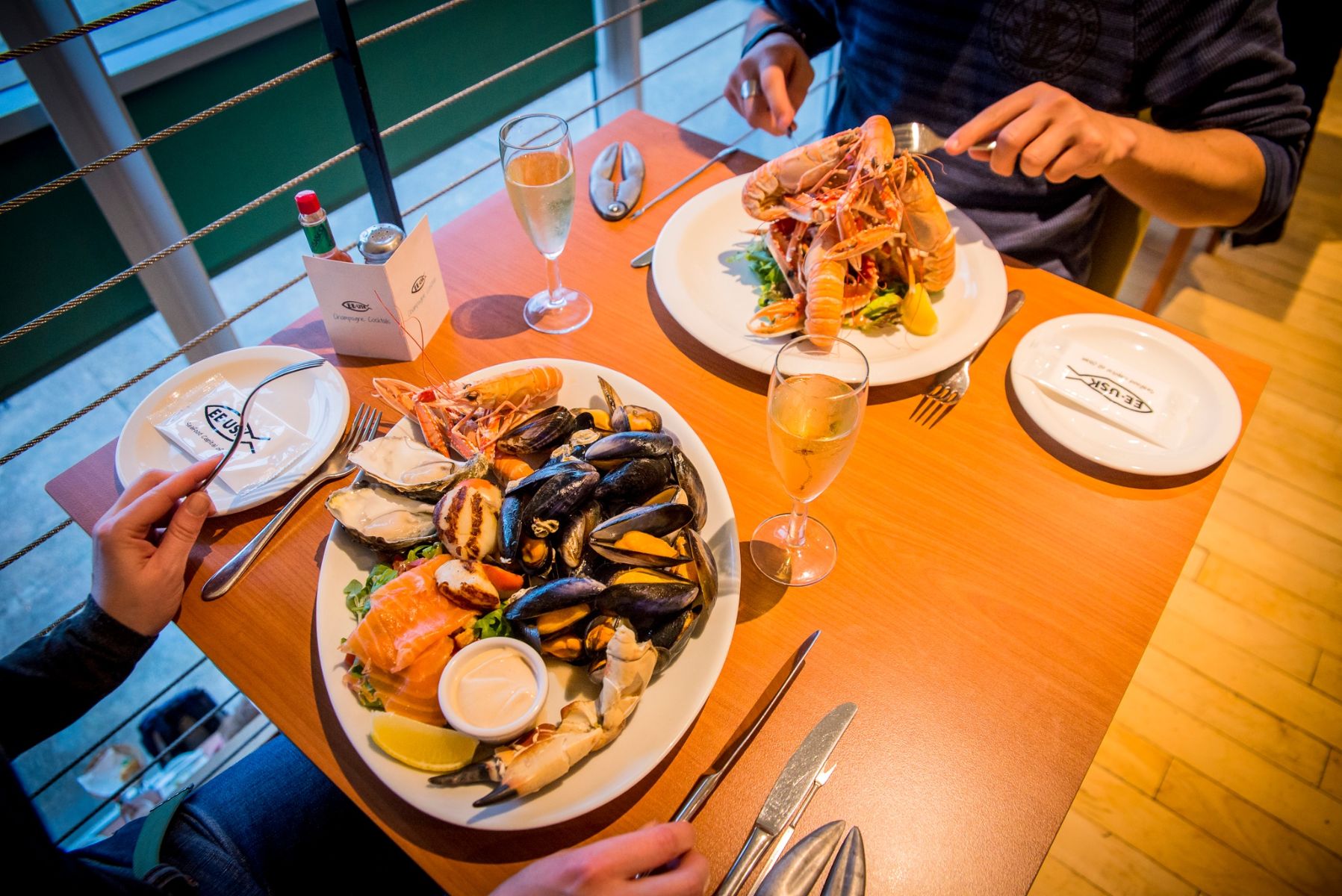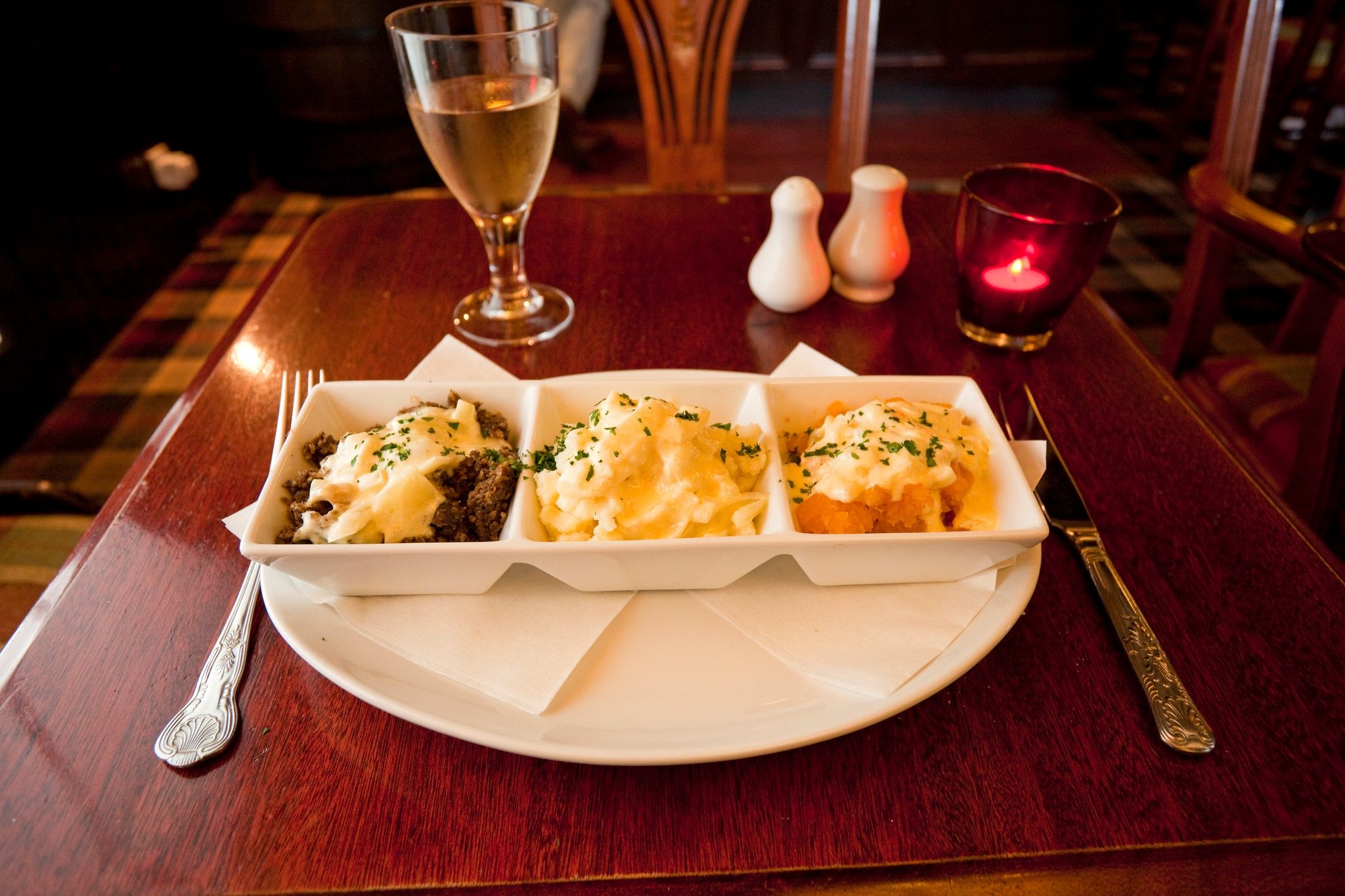
A dish of haggis, neeps and tatties
What is it made of?
This enduringly popular dish is a type of savoury pudding that combines meat with oatmeal, onions, salt and spices. Often served with the classic sides of bashed neeps and mashed tatties (that's Scots for turnip and potatoes), haggis is traditionally cooked in a sheep's stomach (a historic way of preserving meat), but most haggis nowadays is sold and cooked in a synthetic sausage casing. We agree that it may not win the title of the most elegant dish on the planet, but it really is undeniably delicious!This versatile food is also used as a focal ingredient in more contemporary dishes in the restaurants and pubs across Scotland.
From traditional haggis, neeps and tatties with whisky sauce to modern dishes with a twist like haggis Scotch quail's eggs, haggis-topped nachos or the excellent Balmoral Chicken, (which is a succulent chicken breast stuffed with spicy haggis and wrapped in sizzling bacon), haggis is favoured year-round in Scotland and beyond.
WHERE DOES HAGGIS COME FROM?
We're sorry to break this to you but… haggis is not a small animal indigenous to the Highlands of Scotland and, therefore, does not have legs of any length.
It is said that in days gone by hunters would mix offal, which couldn't be preserved, with cereal - creating the first haggis. The first written mention of a haggis-type sausage comes from the ancient Greek playwright Aristophanes in 423 BC when he refers to one exploding!
Though the actual origin of the word haggis remains a mystery, many people believe that it may have come from the Scots word hag which means to chop or hew. The dish has Viking connections too, with strong similarities to the Swedish word hagga and the Icelandic hoggva, both of which also mean to chop or hew. Haggis-type dishes can still be found in Scandinavia today.
